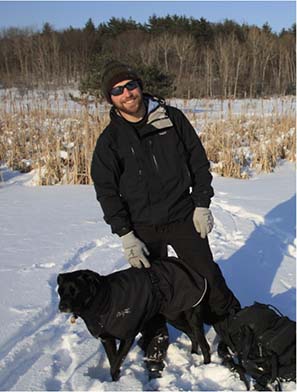Seminar
Tree growth and forest productivity in a human-altered world

SPEAKER:
Dr. Andrew B. Reinmann
Postdoctoral Associate
Department of Earth & Environment
Wednesday, August 31, 2016
1:10 pm to 2:30 pm
1022 HN
Abstract:
The separate and interactive effects of changes in climate and land cover on tree growth and forest productivity represent major gaps in our understanding of earth system response to global change. My research seeks to fill these knowledge gaps through experimental, observational, and modeling approaches in both intact rural and fragmented forest systems. Results from a snow removal experiment in the seasonally snow-covered northern hardwood forest indicate that snowpack reductions and subsequent increases in soil freezing severity substantially reduce sugar maple growth and increase its vulnerability to other extreme climate events and could reduce rates of carbon accumulation in North America’s 22 million ha northern hardwood forest by 11% (~4 Tg C yr-1-). These findings highlight the importance of understanding legacy effects of winter climate conditions on growing season processes when considering carbon cycle-climate feedbacks. Expansion of human settlements and agriculture results in habitat fragmentation and creation of edge environments that can alter growing conditions of remaining vegetation. The temperate broadleaf forest is the most fragmented forest biome in the world and my research in this forest type in southern New England shows large increases in growth and biomass from the forest interior to edge. This edge enhancement could increase forest growth and carbon storage in this region by 12.6±2.9 and 9.6±1.4%, respectively. However, sensitivity of forest growth to growing season heat stress increases from the interior to edge and, using climate projections, my research shows that future heat stress could reduce the forest edge growth enhancement by one-third by the end of the century. These findings of growth enhancement near the forest’s edge are in contrast to other forest biomes and suggest the potential for edge effects in the temperate forest to offset 36% of edge-related declines in tropical forests. Moving forward, I plan to use forest edge dynamics to improve regional carbon budgets and characterize how changes in climate and land cover alter vulnerabilities of the terrestrial carbon sink to additional environmental stressors.
